Abstract
1. A purification procedure for DNA nucleotidyltransferase from Landschütz ascites-tumour cells is described. The enzyme can be separated from endogenous nucleic acid and from triphosphatase and deoxyribonuclease activities measurable at pH7·5. 2. The basic properties of the nucleotidyltransferase reaction are as follows. The enzyme has optimum activity at pH7·2–7·4. It displays an absolute requirement for DNA-primer, thermally-denatured DNA serving three to ten times as efficiently in this respect as native DNA. Maximum synthesis of polydeoxyribonucleotide occurs in the presence of all four deoxyribonucleoside 5′-triphosphates, but a limited incorporation of mononucleotide into polynucleotide is observed when the system is provided with only one triphosphate, or with various combinations of mono-, di- and tri-phosphates. The reaction requires the presence of a bivalent cation, and of those tested, Mg2+ ions were by far the most effective. Manganous ions promoted synthesis but to a much smaller extent. Calcium ions did not support synthesis at all. At the appropriate concentrations, the univalent cations (sodium and potassium) stimulated the reaction by 25% and 125% respectively. The presence of EDTA in the reaction mixture stimulates the system five- to ten-fold. 3. The storage characteristics of the enzyme (as well as the activities of the various fractions) improve markedly if EDTA and 2-mercaptoethanol are included in the enzyme solution and in all preparative buffer solutions. 4. The enzyme loses more than 95% of its activity after heating for 1min. at 45°. If the heating is conducted in the presence of DNA, the enzyme becomes relatively heat-resistant (presumably as a consequence of complex-formation with the DNA) and may actually display an activation effect. This is discussed in relation to a possible molecular conformation of the enzyme. 5. The product of the nucleotidyltransferase reaction is precipitable by acid or ethanol, and is susceptible to the actions of deoxyribonucleases I and II, snake-venom and spleen phosphodiesterases, and micrococcal nuclease. It forms a band in a density gradient of caesium chloride at a density similar to that of the DNA-primer. 6. By the criteria of nearest-neighbour frequency analyses, the product of the nucleotidyltransferase reaction has the characteristics to be expected of a polynucleotide synthesized in accordance with the template directions of the primer.
Full text
PDF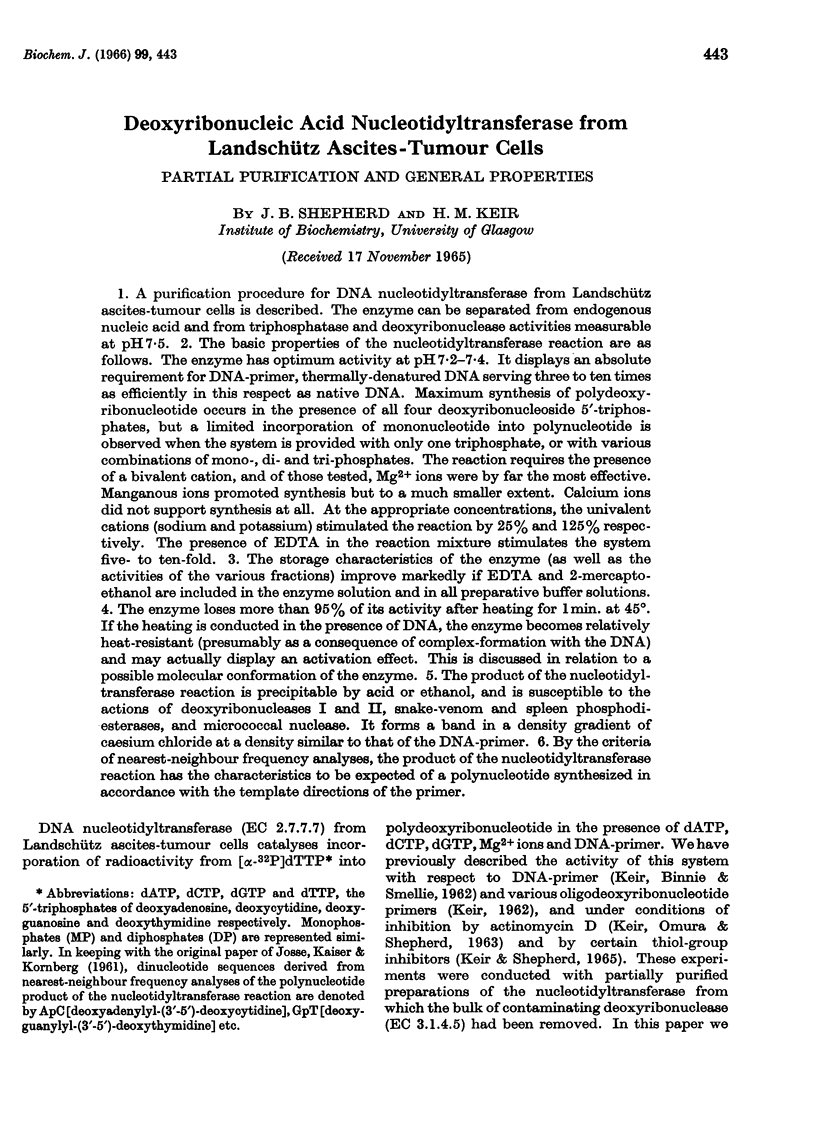
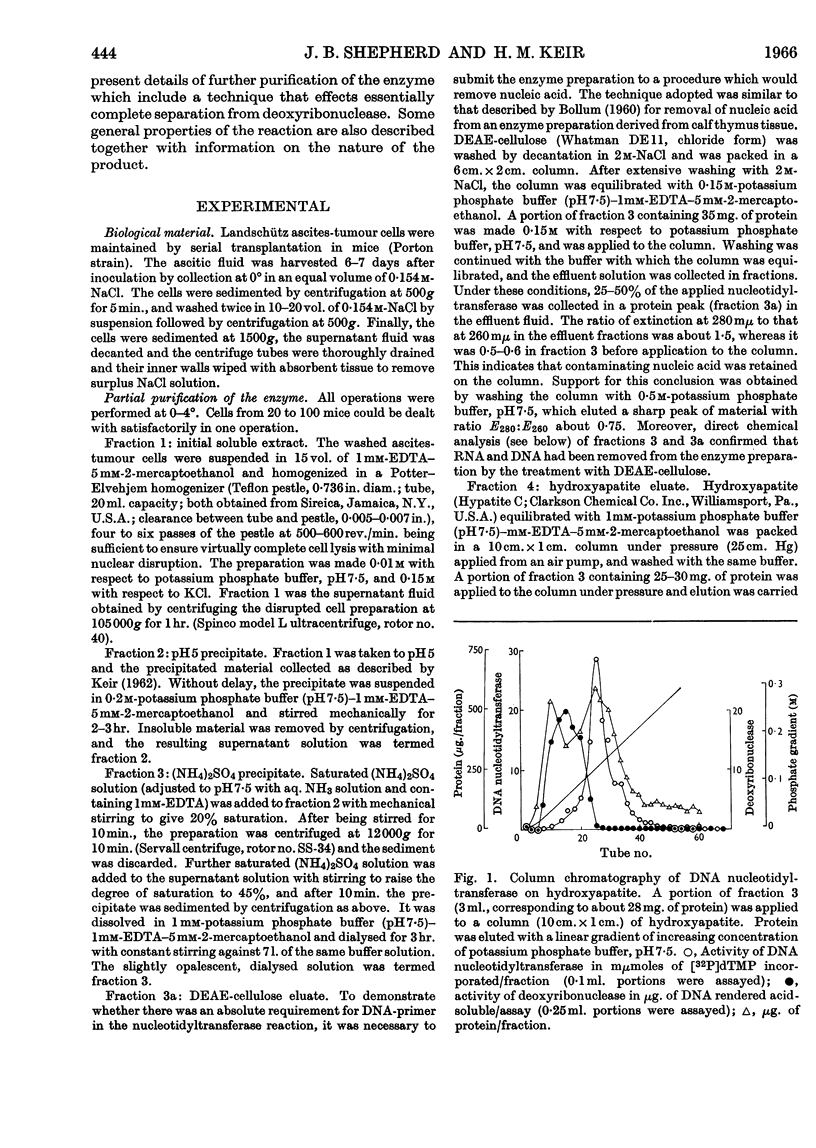

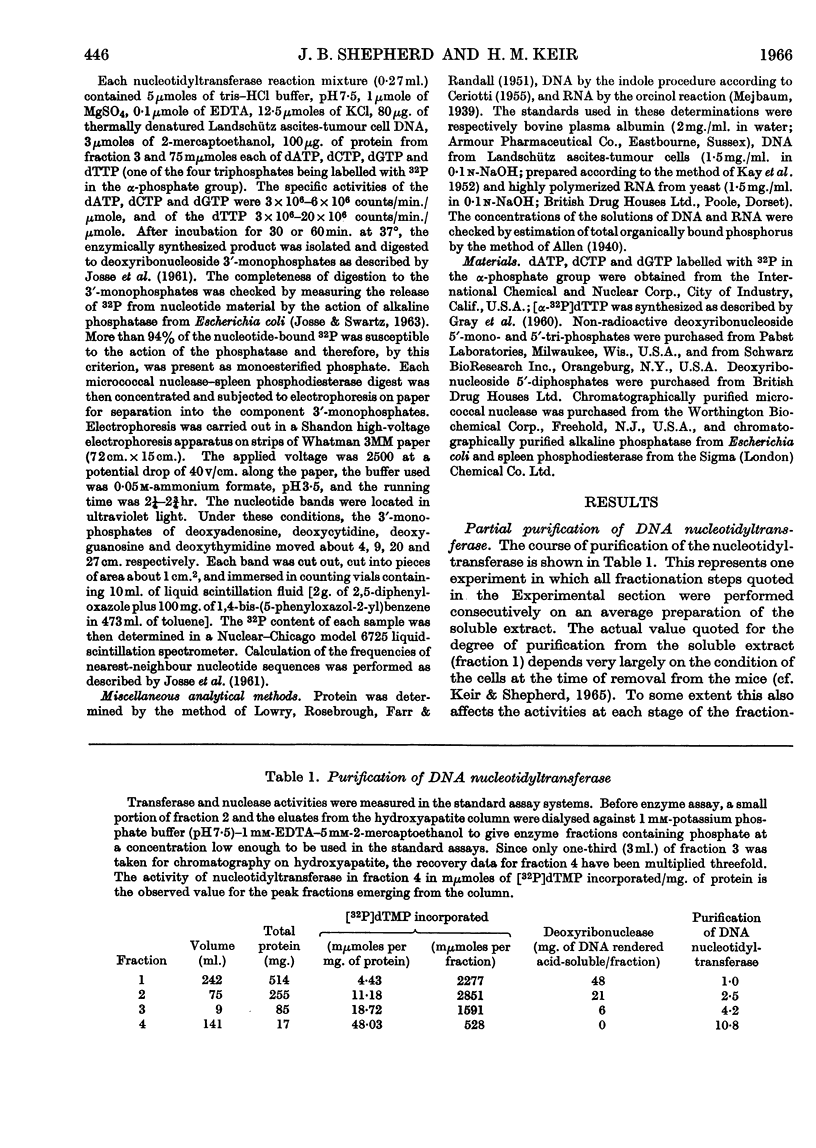
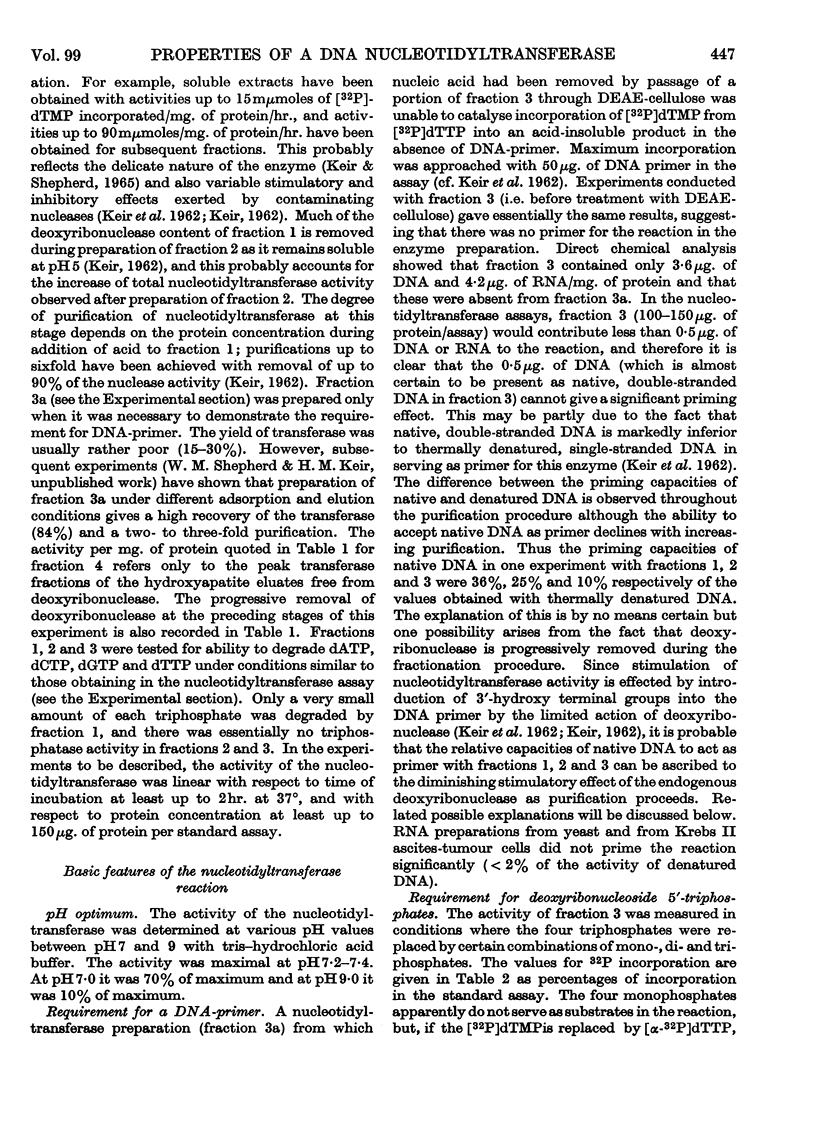
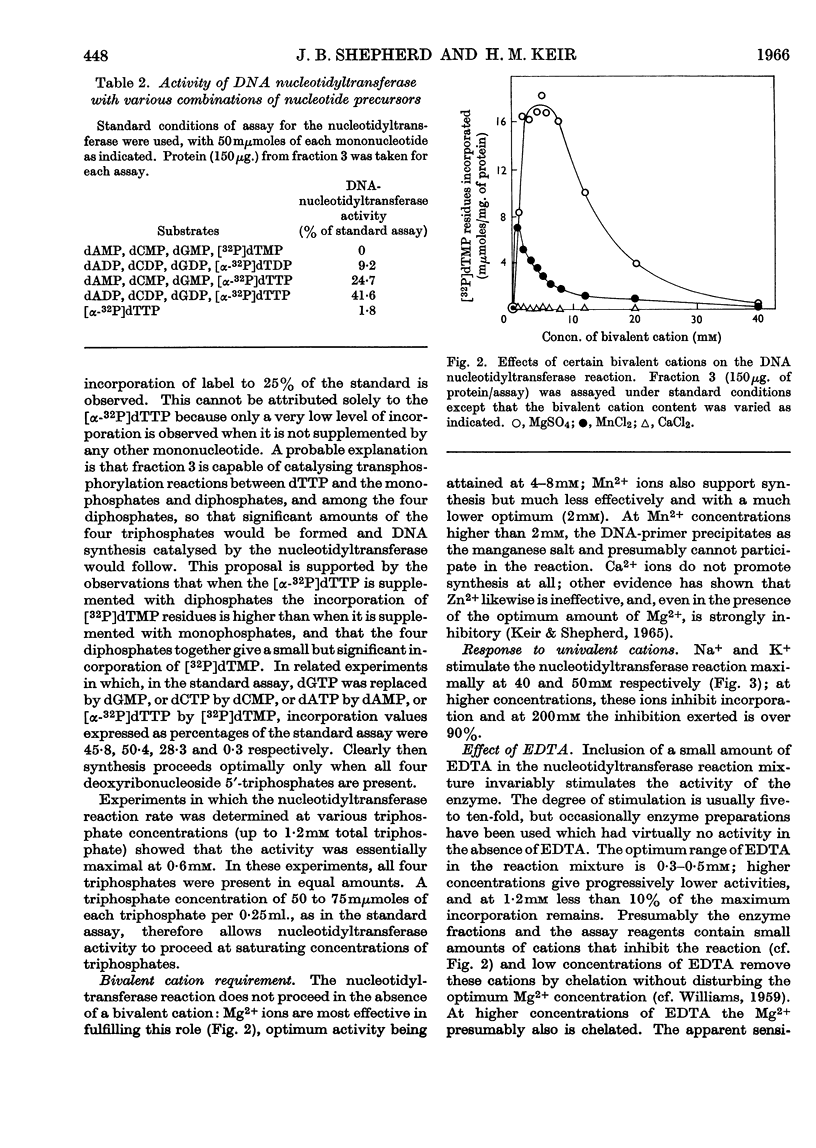
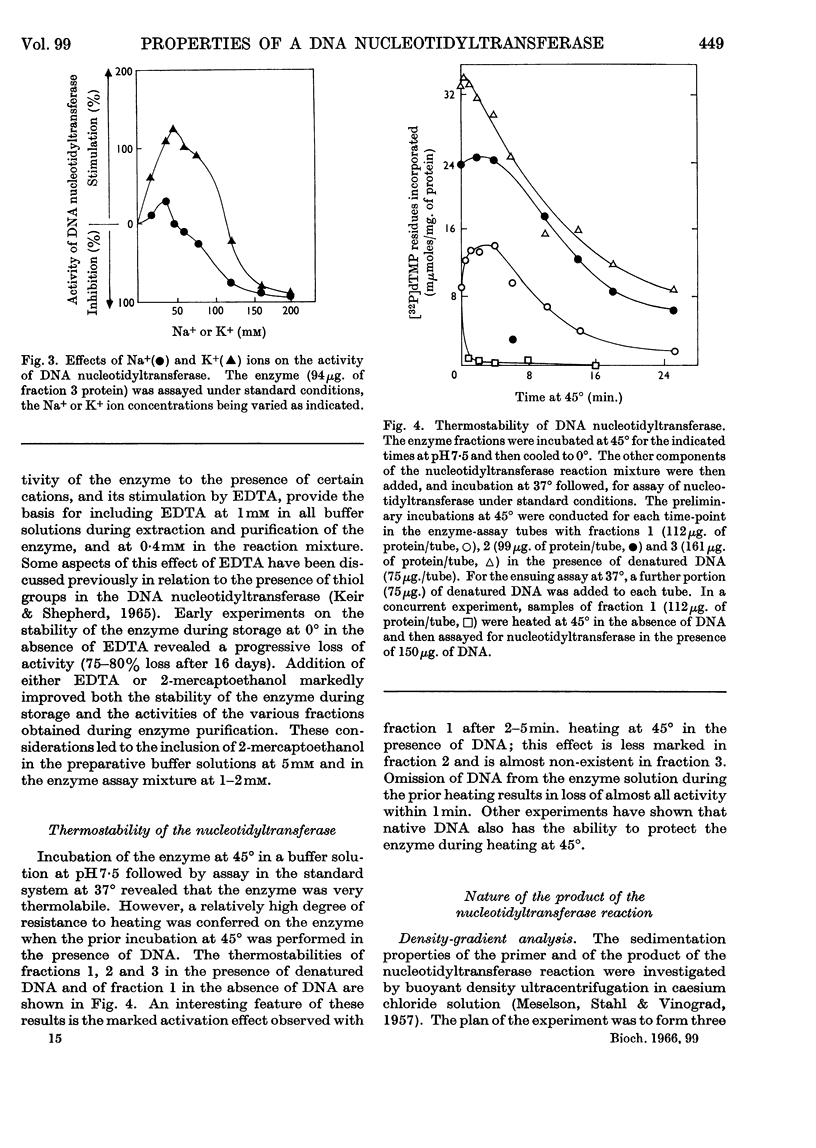
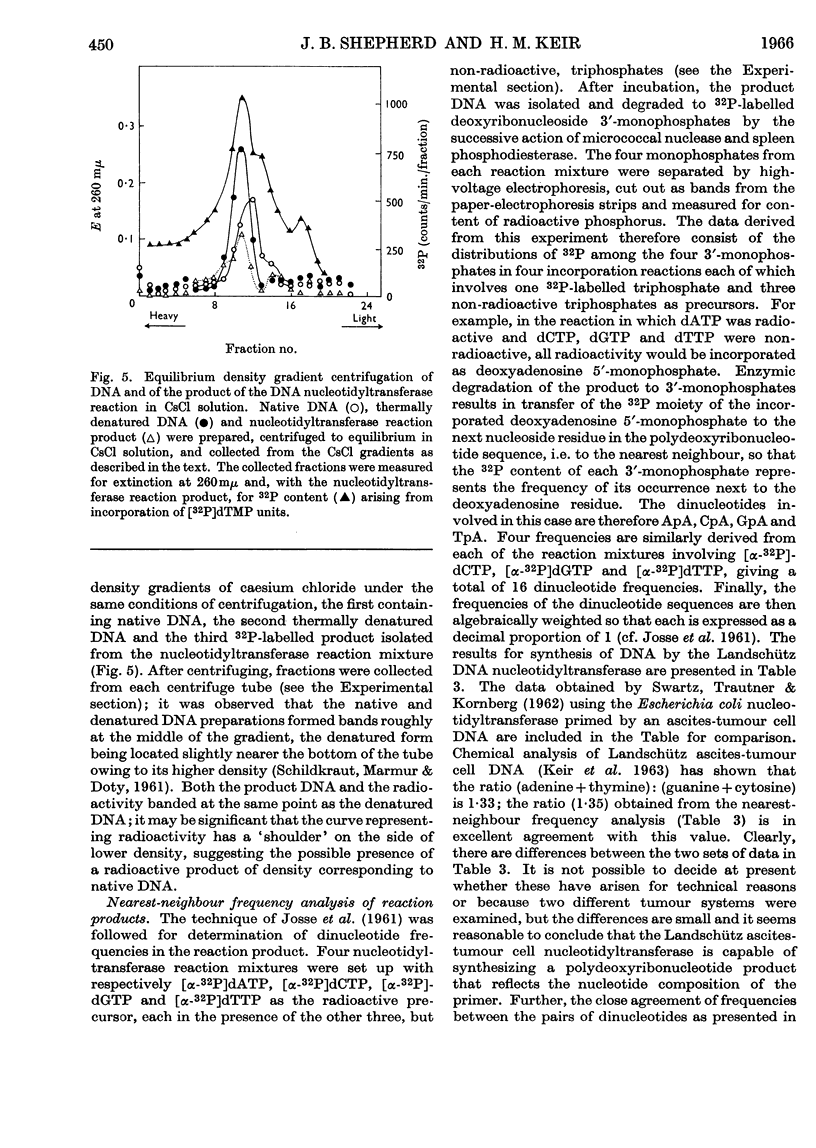
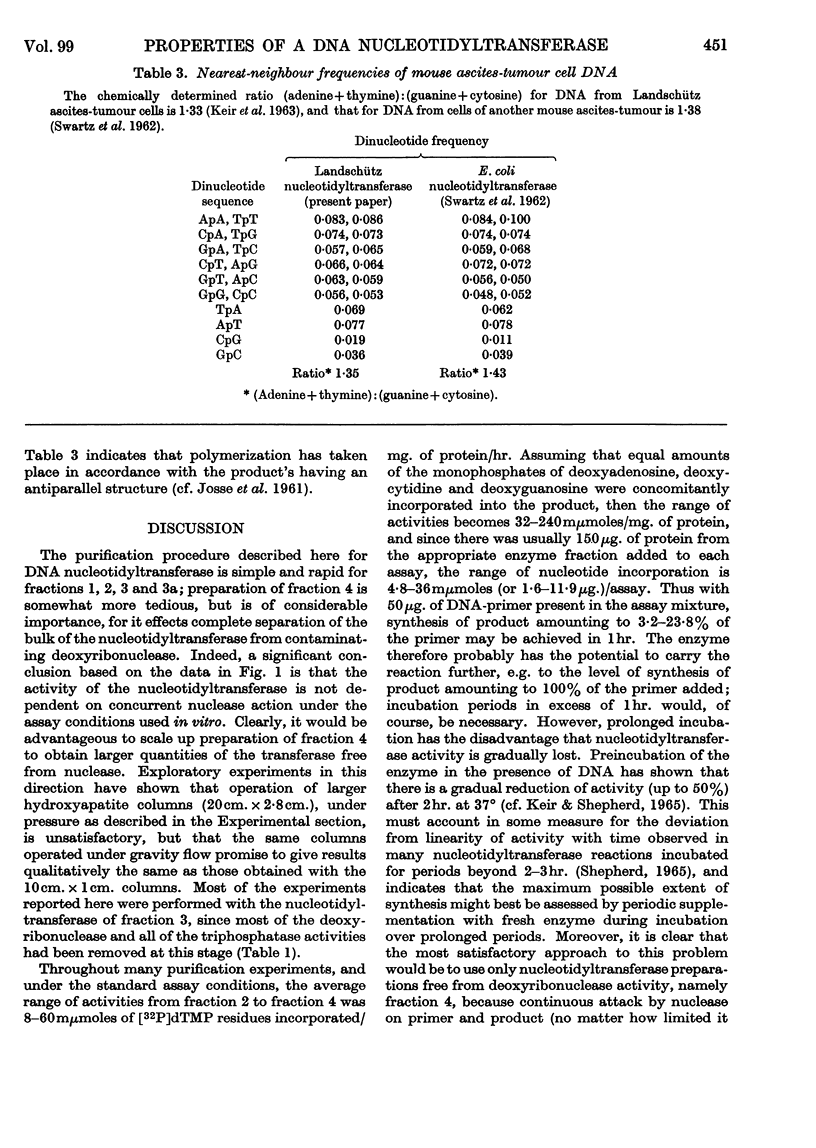
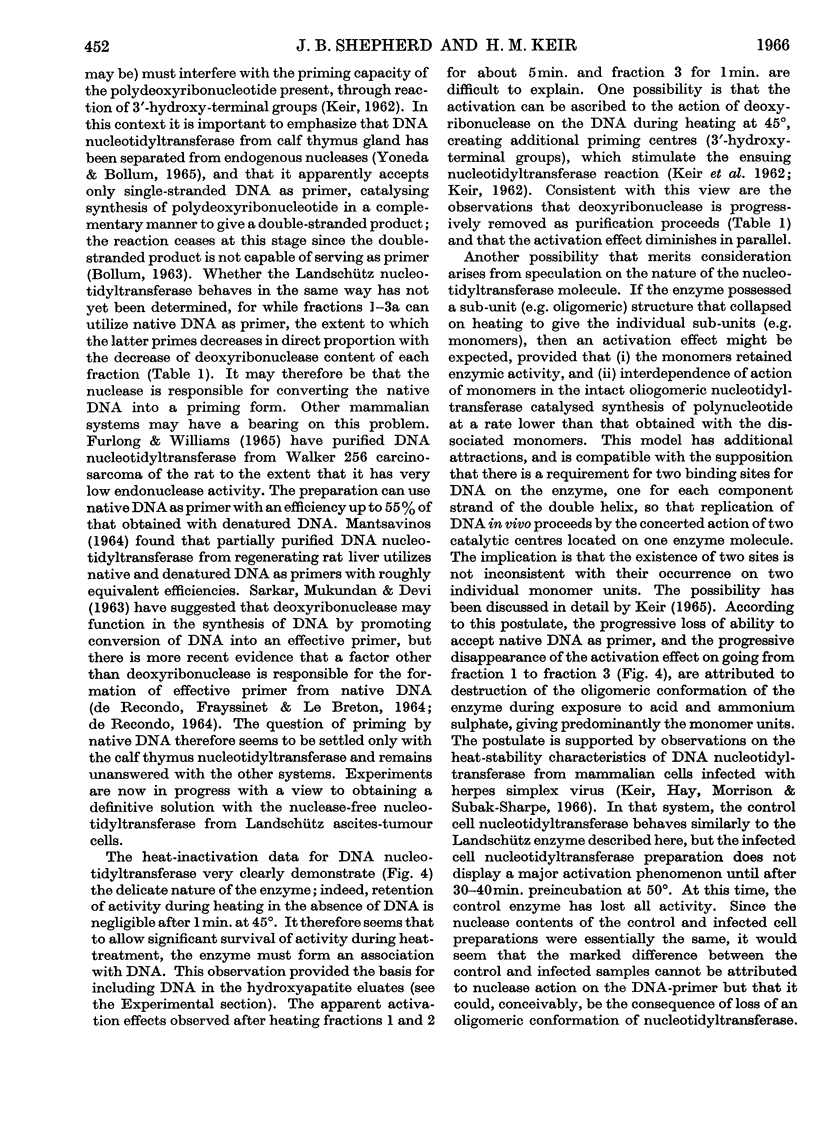
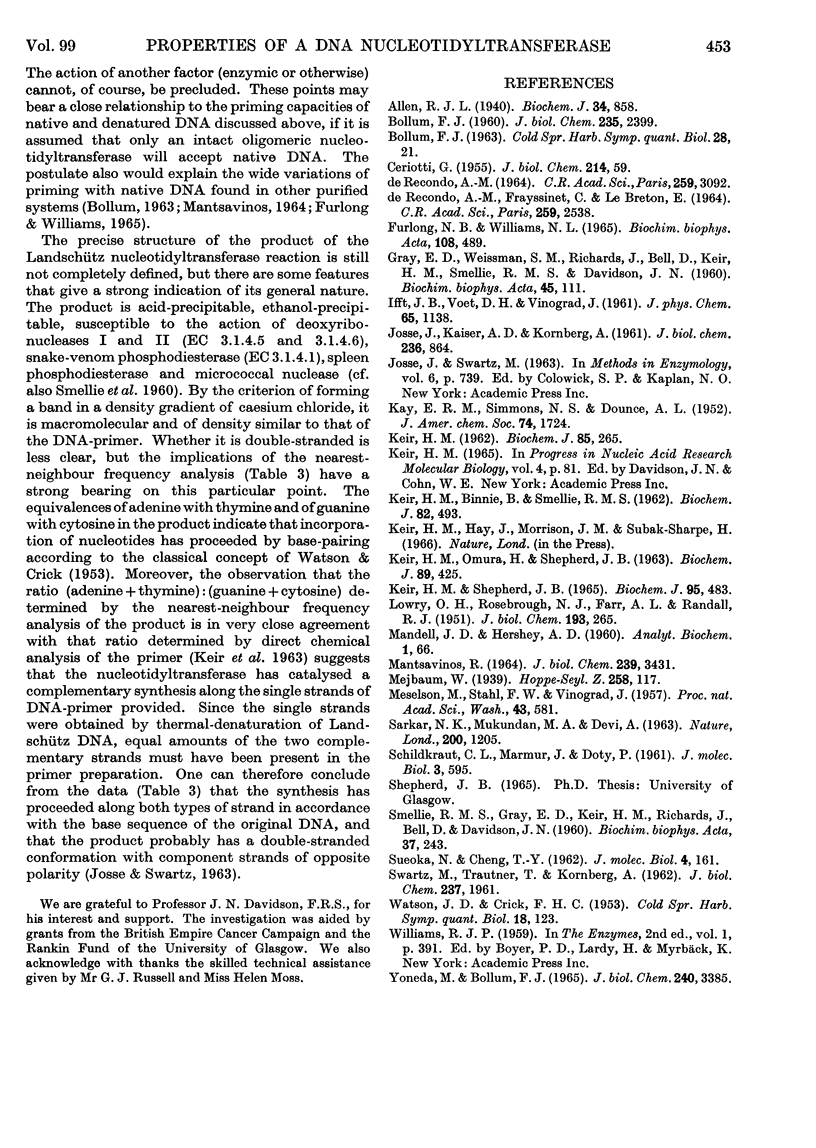
Selected References
These references are in PubMed. This may not be the complete list of references from this article.
- Allen R. J. The estimation of phosphorus. Biochem J. 1940 Jun;34(6):858–865. doi: 10.1042/bj0340858. [DOI] [PMC free article] [PubMed] [Google Scholar]
- BOLLUM F. J. Calf thymus polymerase. J Biol Chem. 1960 Aug;235:2399–2403. [PubMed] [Google Scholar]
- CERIOTTI G. Determination of nucleic acids in animal tissues. J Biol Chem. 1955 May;214(1):59–70. [PubMed] [Google Scholar]
- DE RECONDO A. M., FRAYSSINET C., LEBRETON E. LES DNA-POLYM'ERASES DU FOIE AU COURS DE L'HYPERTROPHIE COMPENSATRICE. CONDITIONS FAVORISANT L'ACTIVATION DU DNA N'ECESSAIRE 'A LA R'EACTION DE POLYM'ERISATION. C R Hebd Seances Acad Sci. 1964 Oct 12;259:2538–2541. [PubMed] [Google Scholar]
- DE RECONDO A. M. SYNTH'ESE DU DNA IN VITRO: ACTIVATION DU DNA N'ECESSAIRE 'A LA R'EACTION PAR LES SURNAGEANTS D'HOMOG'ENAT DE FOIES EN HYPERTROPHIE COMPENSATRICE ET D'H'EPATOMES: M'ECANISMES ENZYMATIQUES IMPLIQU'ES. C R Hebd Seances Acad Sci. 1964 Nov 2;259:3092–3095. [PubMed] [Google Scholar]
- Furlong N. B. Deoxyribonucleic acid polymerase from Walker 256 carcinosarcoma. Biochim Biophys Acta. 1965 Nov 8;108(3):489–500. doi: 10.1016/0005-2787(65)90040-7. [DOI] [PubMed] [Google Scholar]
- GRAY E. D., WEISSMAN S. M., RICHARDS J., BELL D., KEIR H. M., SMELLIE R. M., DAVIDSON J. N. Studies onnthe biosynthesis of deoxyribonucleic acid by extracts of mammalian cells. V. Factors interfering with biosynthesis. Biochim Biophys Acta. 1960 Dec 4;45:111–120. doi: 10.1016/0006-3002(60)91431-1. [DOI] [PubMed] [Google Scholar]
- JOSSE J., KAISER A. D., KORNBERG A. Enzymatic synthesis of deoxyribonucleic acid. VIII. Frequencies of nearest neighbor base sequences in deoxyribonucleic acid. J Biol Chem. 1961 Mar;236:864–875. [PubMed] [Google Scholar]
- KEIR H. M., BINNIE B., SMELLIE R. M. Factors affecting the primer for deoxyribonucleic acid polymerase. Biochem J. 1962 Mar;82:493–499. doi: 10.1042/bj0820493. [DOI] [PMC free article] [PubMed] [Google Scholar]
- KEIR H. M., OMURA H., SHEPHERD J. B. INHIBITION OF A MAMMALIAN DEOXYRIBONUCLEIC ACID NUCLEOTIDYLTRANSFERASE BY ACTINOMYCIN D. Biochem J. 1963 Dec;89:425–430. doi: 10.1042/bj0890425. [DOI] [PMC free article] [PubMed] [Google Scholar]
- KEIR H. M., SHEPHERD J. B. THIOL GROUPS IN DEOXYRIBONUCLEIC ACID NUCLEOTIDYLTRANSFERASE. Biochem J. 1965 May;95:483–489. doi: 10.1042/bj0950483. [DOI] [PMC free article] [PubMed] [Google Scholar]
- KEIR H. M. Stimulation and inhibition of deoxyribonucleic acid nucleotidyltransferase by oligodeoxyribonucleotides. Biochem J. 1962 Nov;85:265–276. doi: 10.1042/bj0850265. [DOI] [PMC free article] [PubMed] [Google Scholar]
- LOWRY O. H., ROSEBROUGH N. J., FARR A. L., RANDALL R. J. Protein measurement with the Folin phenol reagent. J Biol Chem. 1951 Nov;193(1):265–275. [PubMed] [Google Scholar]
- MANDELL J. D., HERSHEY A. D. A fractionating column for analysis of nucleic acids. Anal Biochem. 1960 Jun;1:66–77. doi: 10.1016/0003-2697(60)90020-8. [DOI] [PubMed] [Google Scholar]
- MANTSAVINOS R. STUDIES ON THE SYNTHESIS OF DEOXYRIBONUCLEIC ACID BY MAMMALIAN ENZYMES. I. INCORPORATION OF DEOXYRIBONUCLEOSIDE 5'-TRIPHOSPHATES INTO DEOXYRIBONUCLEIC ACID BY A PARTIALLY PURIFIED ENZYME FROM REGENERATING RAT LIVER. J Biol Chem. 1964 Oct;239:3431–3435. [PubMed] [Google Scholar]
- Meselson M., Stahl F. W., Vinograd J. EQUILIBRIUM SEDIMENTATION OF MACROMOLECULES IN DENSITY GRADIENTS. Proc Natl Acad Sci U S A. 1957 Jul 15;43(7):581–588. doi: 10.1073/pnas.43.7.581. [DOI] [PMC free article] [PubMed] [Google Scholar]
- SARKAR N. K., MUKUNDAN M. A., DEVI A. POLAROGRAPHY OF CADMIUM TRANSFUSION--GELATIN MIXTURES. Nature. 1963 Dec 21;200:1205–1206. doi: 10.1038/2001205a0. [DOI] [PubMed] [Google Scholar]
- SCHILDKRAUT C. L., MARMUR J., DOTY P. The formation of hybrid DNA molecules and their use in studies of DNA homologies. J Mol Biol. 1961 Oct;3:595–617. doi: 10.1016/s0022-2836(61)80024-7. [DOI] [PubMed] [Google Scholar]
- SMELLIE R. M., GRAY E. D., KEIR H. M., RICHARDS J., BELL D., DAVIDSON J. N. Studies on the biosynthesis of deoxyribonucleic acid by extracts of mammalian cells. III. Net synthesis of polynucleotides. Biochim Biophys Acta. 1960 Jan 15;37:243–250. doi: 10.1016/0006-3002(60)90230-4. [DOI] [PubMed] [Google Scholar]
- SUEOKA N., CHENG T. Y. Fractionation of nucleic acids with the methylated albumin column. J Mol Biol. 1962 Mar;4:161–172. doi: 10.1016/s0022-2836(62)80048-5. [DOI] [PubMed] [Google Scholar]
- SWARTZ M. N., TRAUTNER T. A., KORNBERG A. Enzymatic synthesis of deoxyribonucleic acid. XI. Further studies on nearest neighbor base sequences in deoxyribonucleic acids. J Biol Chem. 1962 Jun;237:1961–1967. [PubMed] [Google Scholar]
- WATSON J. D., CRICK F. H. The structure of DNA. Cold Spring Harb Symp Quant Biol. 1953;18:123–131. doi: 10.1101/sqb.1953.018.01.020. [DOI] [PubMed] [Google Scholar]
- YONEDA M., BOLLUM F. J. DEOXYNUCLEOTIDE-POLYMERIZING ENZYMES OF CALF THYMUS GLAND. I. LARGE SCALE PURIFICATION OF TERMINAL AND REPLICATIVE DEOXYNUCLEOTIDYL TRANSFERASES. J Biol Chem. 1965 Aug;240:3385–3391. [PubMed] [Google Scholar]


